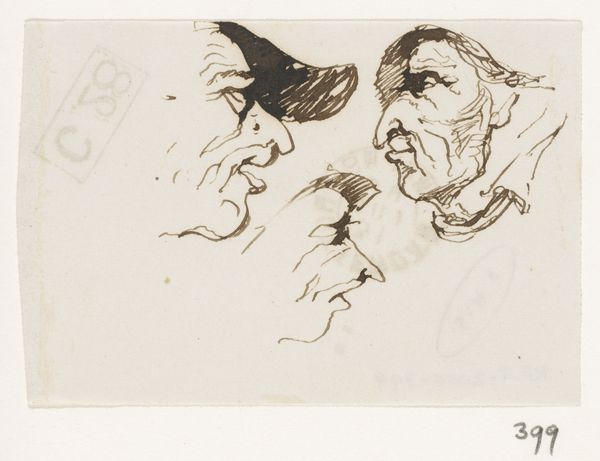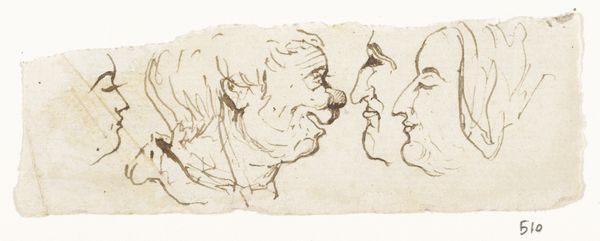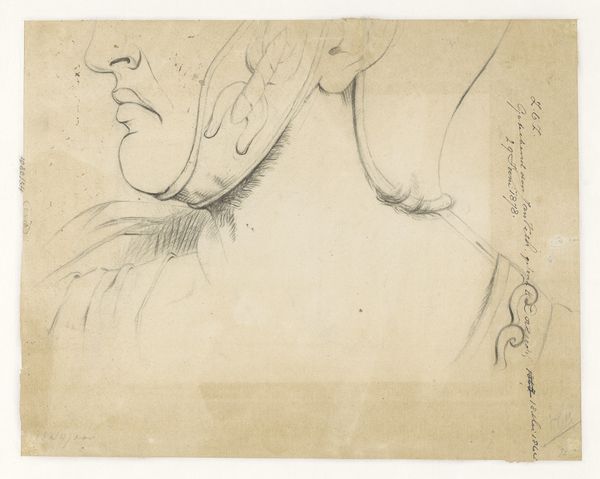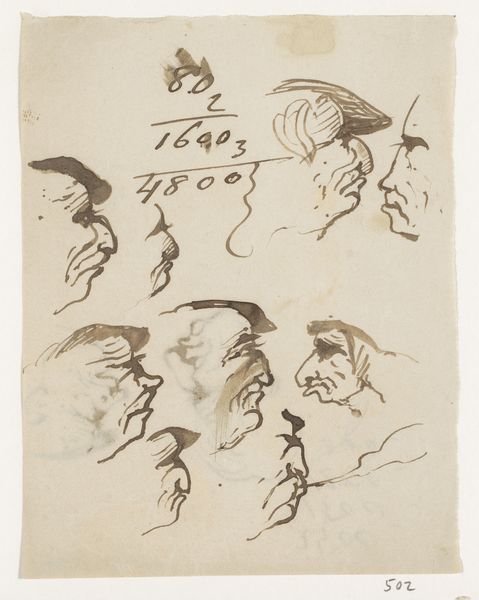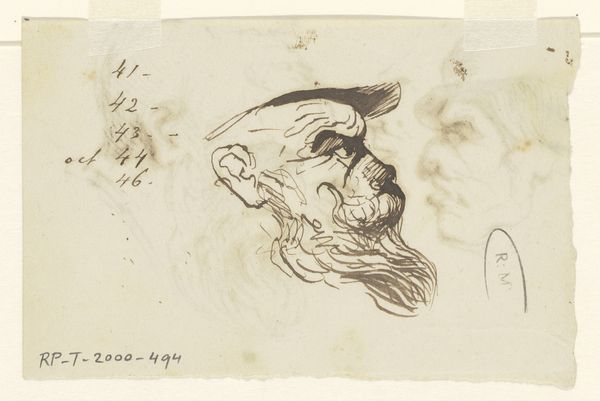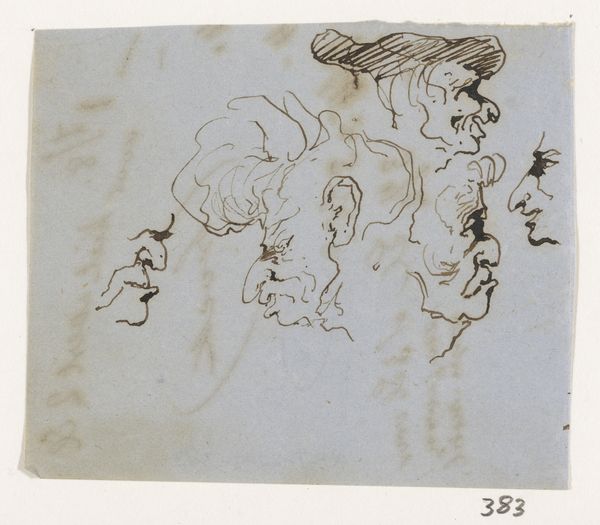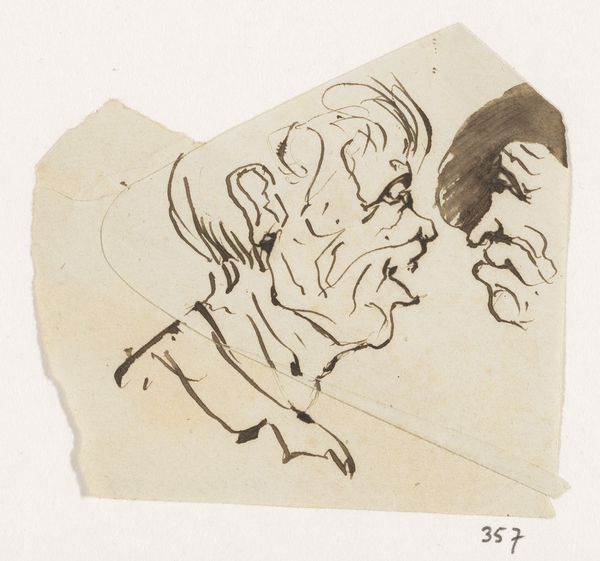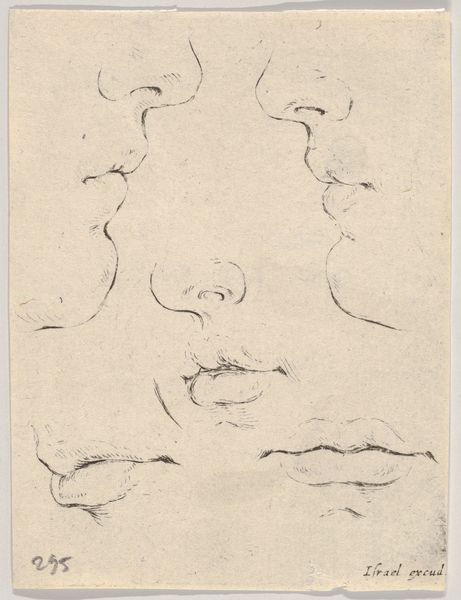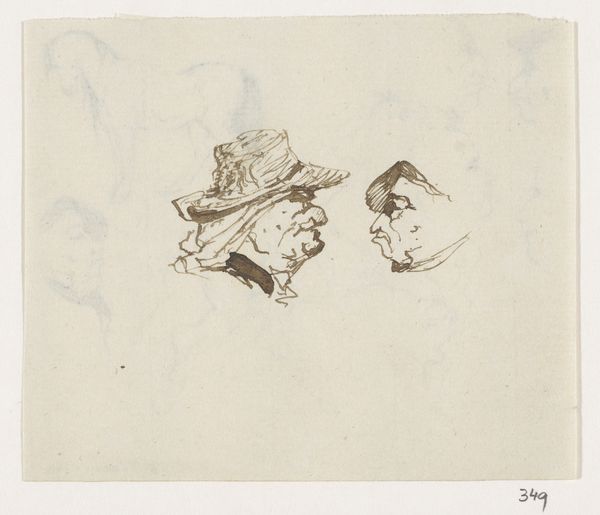
Dimensions: height 46 mm, width 55 mm
Copyright: Rijks Museum: Open Domain
Editor: Here we have "Twee Koppen" – that's "Two Heads" – a pen and ink drawing from between 1840 and 1880 by Johannes Tavenraat. It feels like a quick sketch, maybe a study. I’m struck by how minimalist it is; just a few lines defining these profiles. How do you interpret this work? Curator: What strikes me is the power of the fragment. The incompleteness invites us to project our own narratives, doesn't it? These 'heads' lack eyes. It begs questions about visibility, who gets seen and how? In what social strata do such representations appear or not appear, and with what limitations are their likeness represented? Editor: I see what you mean. The facelessness is unsettling but also makes them feel more universal. I was also wondering, why two heads together? Curator: Precisely. The pairing invites us to think about relationships – power dynamics, intimacy, perhaps even opposition. Given the Romantic era context, we might even consider it in light of burgeoning nationalistic sentiments. Think about the "us" versus "them" mentality that was becoming prominent. Are these ‘types’ of people being contrasted, perhaps even essentialized, through physiognomy which was then in vogue? Editor: So, it’s not just a simple sketch, but maybe a reflection of social ideas at the time? Curator: Absolutely! Art doesn’t exist in a vacuum. Even a seemingly simple sketch can be a potent reflection—or even a subtle critique—of the society that produced it. We just have to learn to ask the right questions, like the ones you're asking! Editor: I never thought about it that way before, it definitely gives me a lot to think about! Thank you.
Comments
No comments
Be the first to comment and join the conversation on the ultimate creative platform.



